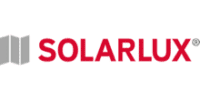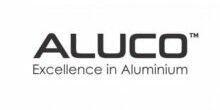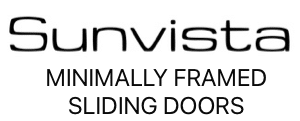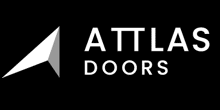In June 2022, Part L 2021 of the Building Regulations comes into force, with the details announced in December 2021. These bring window and door U-Values and Window Energy Ratings lower and better for both new build properties as well as existing dwellings.
What is Part L 2021?
Part L 2021, or Part L Conservation of Fuel and Power of the Building Regulations relates to construction projects for new buildings as well as improvements or changes to existing dwellings and other buildings. This series of many different Building Regulations defines the standards relating to energy efficiency, thermal performance and carbon emissions.
Part L 2021 is not new in and of itself and dates back to 2010. The List of Approved Documents includes:
There are four approved documents.
Approved Document L1A
Conservation of fuel and power in new dwellings
Approved Document L1B
Conservation of fuel and power in existing dwellings
Approved Document L2A
Conservation of fuel and power in new buildings other than dwellings
Approved Document L2B
Conservation of fuel and power in existing buildings other than dwellings
These changes impact what future products systems companies design, manufacturers make and installers fit. Homeowners have an altogether different challenge in trying to understand what’s required and deal with an installer providing clear and honest information.
Whether Part L 2021 is positive or negative for the glazing sector is open to discussion. Our view is, that it’s positive for creating even more energy-efficient windows and helping reduce energy consumption. Here’s an overview of Part L 2021 and what it means for the glazing industry.
What are the significant changes with Part L 2021
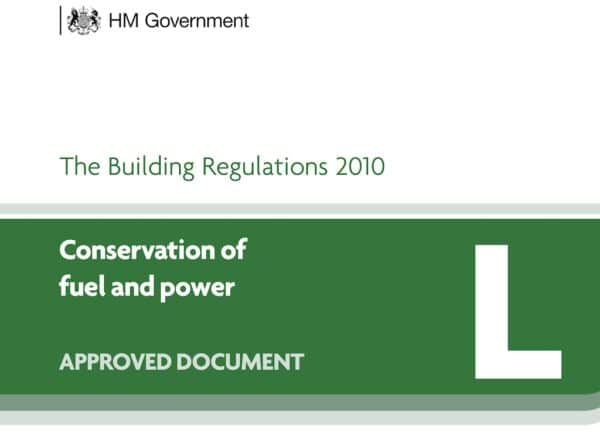
Changes to Part L of the Building Regulations, are published in December 2021 and come into force in June 2022. Essentially they’re required to see new homes deliver even better savings in carbon emissions when compared to the existing standards.
As a result, from June 2022, every new home now needs to produce 31% fewer emissions compared with the current version of Part L. The U-values of walls, floors and roofs are down to 0.18Wm2K, 0.13Wm2K and 0.11Wm2K respectively. Windows are expected to go down to 1.2Wm2K
For Part L 2021, it’s even stricter focusing on energy efficiency and ventilation. Overall, glazing must now do more as part of an overall structure to bring the desired future requirement of virtually zero energy buildings.
The entire document is available to read and view.
The new U-Values and Window Energy Ratings with Part L 2021
For installers and homeowners, new windows are now expected to play an even bigger part in meeting future needs for zero energy buildings. Here’s how the U-Values are changing for new and existing dwellings.
| NEW DWELLINGS | Current 2013 | 2022 Part L | Possible 2025 Part L |
| Windows | 1.6W/m2K | 1.2W/m2K | 0.8Wm2K |
| Doors | 1.8W/m2K | 1.0W/m2K | 1.0W/m2K |
| EXISTING DWELLINGS | |||
| Windows | 1.6W/m2K | 1.4W/m2K | |
| Doors | 1.8W/m2K | 1.4W/m2K |
What Part L 2021 means for windows and doors
As you’d expect, there’s a mixture of both honest, factual information as well as press releases by a small number of systems companies using unnecessary slogans like ‘time is running out’ and ‘ticking time bomb’.
All systems companies for residential and commercial glazing will invariably have to make some changes to their products. What’s disappointing is how little they’ve made public about their intentions. That said, some of these have been complying for quite a while already with CEN standard windows, triple glazing and other methods.
Whilst these are significant changes, the reality is the diversity of doors and windows varies so much, compliance will happen but questions do arise.
With many installations needing background ventilation, special shapes, bay and bow windows and even extension pieces, it’s unlikely the performance requirements take these into account.
By redesign we see slimmer profiles, more glass, larger and deeper thermal breaks and added insulation in the profile chambers. Glass improvements stretch to triple glass and the use of higher performance gas, coatings and spacer bars.
Will manufacturers and installers need to change system?
With many of the existing systems, a significant glass upgrade looks inevitable to meet Part L 2021. When it comes to the next changes in 2025, redesign is inevitable.
Invariably some manufacturers and installers will probably look to change system. Every systems company is aware of these changes and is already looking at new or adapted products.
Installers will already be aware that many products are tested with particular glass specifications, specific frame and vent combinations to meet the stated figures. They’re great for marketing messages but moving forward, systems companies will need to be far clearer in what they offer. Lame terms used for years such as “U=Values as low as” or “U-Values down to” really won’t wash.
Prices will go up for manufacturers and, in turn, for consumers.
Aluminium Windows
The current range of aluminium windows has according to published figures by the systems companies does look like they’ll comply.
Choose an Origin OW-70 window and this model meets the forthcoming changes with U-Values stated at 1.1Wm2K with triple glazing. Go with the OW-80 versions with the Aerogel upgrade and this will go down to 0.15Wm2K again with triple glazing.
Senior Architectural with their PURe model meets 0.71Wm2K with a CEN calculation or 0.8Wm2K with the alternative calculation method.
The Reynaers SL38 product states U-Value down to 1.4Wm2K using glass units with 1.1 Value.
Smart Systems offers a range of aluminium window products with Alitherm being one of the best-known. Alitherm 600 states U-Values of 1.3Wm2K with the right glass specification. Alitherm 300 will need improvement as it’s stated at 1.5Wm2K which won’t comply. Neither will the flush casement 500 model. Eco-Futural does with 1.1W/m²K using glass having a centre pane of 0.6W/m²K and tested as a tilt and turn window.
Aluk is already well-known for its excellent thermal insulation and acoustics. The popular Optio 58BW casement meets the forthcoming requirements as a triple glazed window. The latest C70S window again with triple glazing also complies.
Bifolding and Sliding Doors
For bifolding and sliding doors, this will be a little more challenging as many well-known brands even with triple glazing will only meet the Existing Dwellings U-Value using triple glazing.
Most noteworthy with new products is the new Luminia F82 by Aluk. The company claims 1.3Wm2K double glazed and 0.9Wm2K triple glazed.
Aluk BSF70 meets this 1.4 value. Origin with their OB-49 model with triple glazing and Krypton Gas achieves 1.2Wm2K. Reynaers CF68 is marketed at 1.1Wm2K with high spec glass. The Schuco ASS70FD can get to 1.1Wm2K. Already complying are Decalu88 bifolds going down to 0.68 again with the right glass specification.
Slimline sliders are likely to be compliant given the minimal aluminium and greater amount of glass, but again triple glazing and high specifications like Krypton gas are likely to be a requirement. The ASE60 by Schuco already meets this figure. Expect higher specification products at increased prices being the norm. Cortizo Cor-Vision plus triple glazed goes to 0.7Wm2K. The Decalu163 lift and slide meets 0.8 W/m2K and the Decalu101 Scand, achieves 0.89W/m2k.
At the upper end of the market, Solarlux Ecoline and Highline bifolds, again triple glazed comfortably meet the new requirements for existing dwellings with U-Values of 1.1Wm2K and 0.8Wm2K respectively, the latter meeting new build requirements too. The new
Residential and Front Doors
Doors with less than 60% glass need to meet 1.2Wm2K for new build and 1.4Wm2K for replacement products. This shouldn’t be too challenging for current systems to meet with panel and glass upgrades.
Similarly for decorative or partially glazed contemporary and traditional doors, we see no issue with frame insulation and door panel enhancements making front doors comply.
Do check with your supplier or systems company for the latest information.
Part L 2021 Conclusion and Summary
We know most systems companies will shortly be announcing their intentions for their product range and we don’t see significant issues with compliance in the months to come.
The reality is some materials are going to struggle to meet ever-changing requirements and a new breed of glazing is to come as a result.
Of course, the inevitable question is what to do right now. The performance figures for triple glazing and highly insulated aluminium systems appear to comply with the new requirements.
One product needing serious consideration by installers and end-users is shifting to composite and hybrid glazing. These comprise a combination of materials using aluminium outside and wood inside or even aluminium outside and PVCu inside. Hybrid windows and doors have met the new requirements for some years already as triple glazed products. Even better these product types are certainly going to be one of the most prominent in giving consumers the right messaging for sustainability, eco-windows and climate change.
Aluminium is great for the recycling message. PVCu has a serious credibility challenge with the worldwide perception of plastic right now. Hybrid comfortably provides the best of aluminium with the sustainability credentials of wood with superb U-Values.
Secondary double glazing is also a vital product for many older properties and for those who can’t afford new windows. This product has come on significantly in recent years and the insulation and acoustic properties are hard to ignore. It’s quite likely some projects will involve leaving the existing windows and having a simple and cheaper secondary glazing upgrade.
Of course, it’s the systems companies that need to work on their systems supporting their manufacturers and installers. Part L 2021 will hopefully stop them from taking such a back seat and leaving the support and marketing of their products to their fabricators or installers. It’s now time all systems companies decided to market their products direct to the homeowner, raise brand awareness and give the right eco and thermal credentials of their systems directly.

